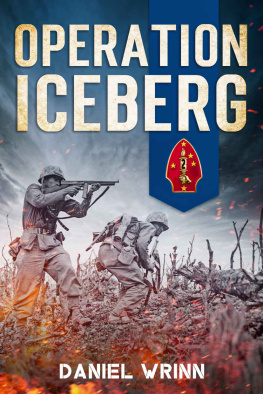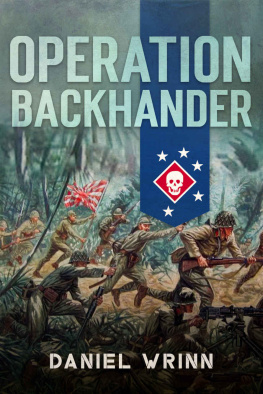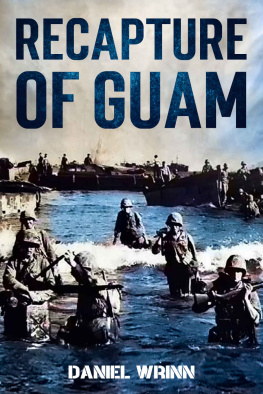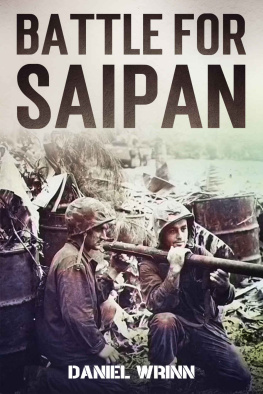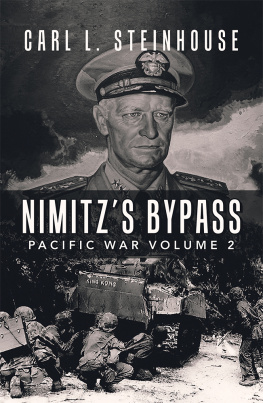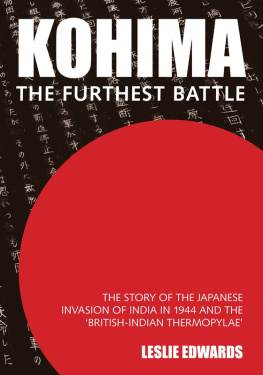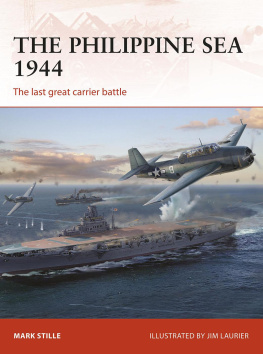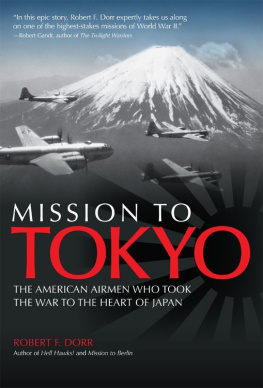Wrinn - Invasion of Tinian: 1944 Battle for Tinian in the Mariana Islands
Here you can read online Wrinn - Invasion of Tinian: 1944 Battle for Tinian in the Mariana Islands full text of the book (entire story) in english for free. Download pdf and epub, get meaning, cover and reviews about this ebook. year: 2021, publisher: Storyteller Books, LLC, genre: Non-fiction. Description of the work, (preface) as well as reviews are available. Best literature library LitArk.com created for fans of good reading and offers a wide selection of genres:
Romance novel
Science fiction
Adventure
Detective
Science
History
Home and family
Prose
Art
Politics
Computer
Non-fiction
Religion
Business
Children
Humor
Choose a favorite category and find really read worthwhile books. Enjoy immersion in the world of imagination, feel the emotions of the characters or learn something new for yourself, make an fascinating discovery.
- Book:Invasion of Tinian: 1944 Battle for Tinian in the Mariana Islands
- Author:
- Publisher:Storyteller Books, LLC
- Genre:
- Year:2021
- Rating:4 / 5
- Favourites:Add to favourites
- Your mark:
- 80
- 1
- 2
- 3
- 4
- 5
Invasion of Tinian: 1944 Battle for Tinian in the Mariana Islands: summary, description and annotation
We offer to read an annotation, description, summary or preface (depends on what the author of the book "Invasion of Tinian: 1944 Battle for Tinian in the Mariana Islands" wrote himself). If you haven't found the necessary information about the book — write in the comments, we will try to find it.
Wrinn: author's other books
Who wrote Invasion of Tinian: 1944 Battle for Tinian in the Mariana Islands? Find out the surname, the name of the author of the book and a list of all author's works by series.
Invasion of Tinian: 1944 Battle for Tinian in the Mariana Islands — read online for free the complete book (whole text) full work
Below is the text of the book, divided by pages. System saving the place of the last page read, allows you to conveniently read the book "Invasion of Tinian: 1944 Battle for Tinian in the Mariana Islands" online for free, without having to search again every time where you left off. Put a bookmark, and you can go to the page where you finished reading at any time.
Font size:
Interval:
Bookmark:
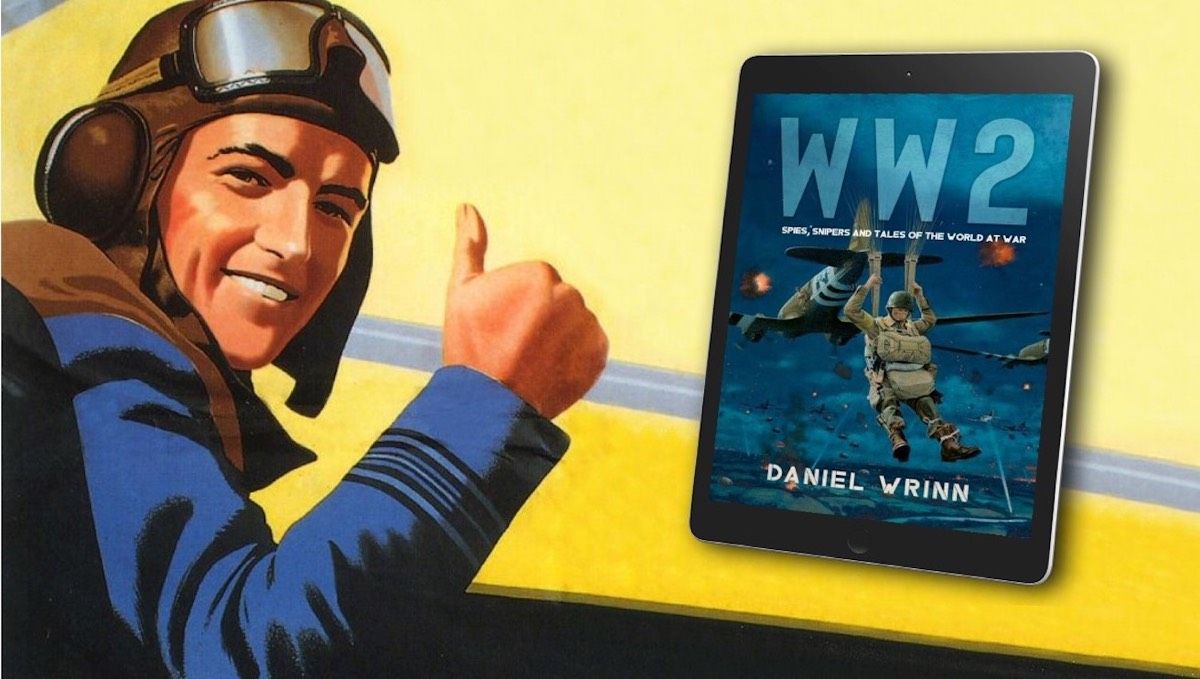
Never miss a new release by signing up for my free readers group. Youll also get WW2: Spies, Snipers and Tales of the World at War delivered to your inbox. (You can unsubscribe at any time.) Tap here to sign up
Once the outcome of Saipans battle was clear, the V Amphibious Corps Commanders turned their attention to the next objective: the island of Tinian. Three miles off Saipans southwest coast and garrisoned with over nine-thousand Japanese troops. Many of the enemy combatants were veterans of the Manchurian Campaign, pummeled for over seven weeks by US Navy air and sea armadas.
The 2nd and 4th Marine Divisions, fresh from fighting on Saipan, were selected to assault Tinian. The vital question of where they would land was still undecided. There was firm support among assault planners to land on two narrow sand stripscodenamed White Beach 1 and White Beach 2on Tinians northwest coast. White Beach 1 was sixty yards wide, while White Beach 2 was one hundred and sixty.
Admiral Richmond Kelly Turner, overall commander of the Marianas Expeditionary Force, was skeptical and suggested an alternative site codenamed Yellow Beach.
On July 3, 1944, Captain James Jones was put on alert for future reconnaissance of these potential landing sites. On July 9, the day Saipan was officially declared secured, Captain Jones got his orders from General Holland Smith. His men were to scout out Tinians beaches and fortifications to determine the capacity to handle a landing force and keep it supplied.
Navy UDT (underwater demolition teams) would locate underwater obstacles and do the hydrographic work. Captain Jones chose Company A under the command of Captain Merwin Silverthorn and First Lieutenant Leo Shinn to command Company B. They rehearsed the operation off the beaches of Saipans Magicienne Bay. On the evening of July 10, Navy and Marine units boarded the destroyer transports Stringham and Gilmer for the quick trip into the channel that separated the two islands.
At 2030 on July 10, the teams debarked in zodiac rubber boats and paddled to within five hundred yards of the beach, then swam the rest of the way in. Luckily, it was a black night, and although the moon rose at 2230, it was largely hidden by the clouds.
Yellow Beach was assigned to Silverthorns Company A. He led eight UDT swimmers and twenty Marines ashore. They found a beach near Tinian Town flanked on each side by formidable cliffs. Several floating mines and underwater boulders barred the approach. On the beach, double-apron barbed wire had been strung.
Captain Silverthorn worked his way thirty yards inland in search of exit routes for the vehicles. Talkative Japanese workers were busy building pillboxes and entrenching blasting charges. Silverthorn spotted three Japanese sentries on the cliff overlooking the beach. Searchlights passed back and forth, scanning the beach approach, but Silverthorn and his men safely made it back to the Stringham. Yellow Beach as a landing site would not work.
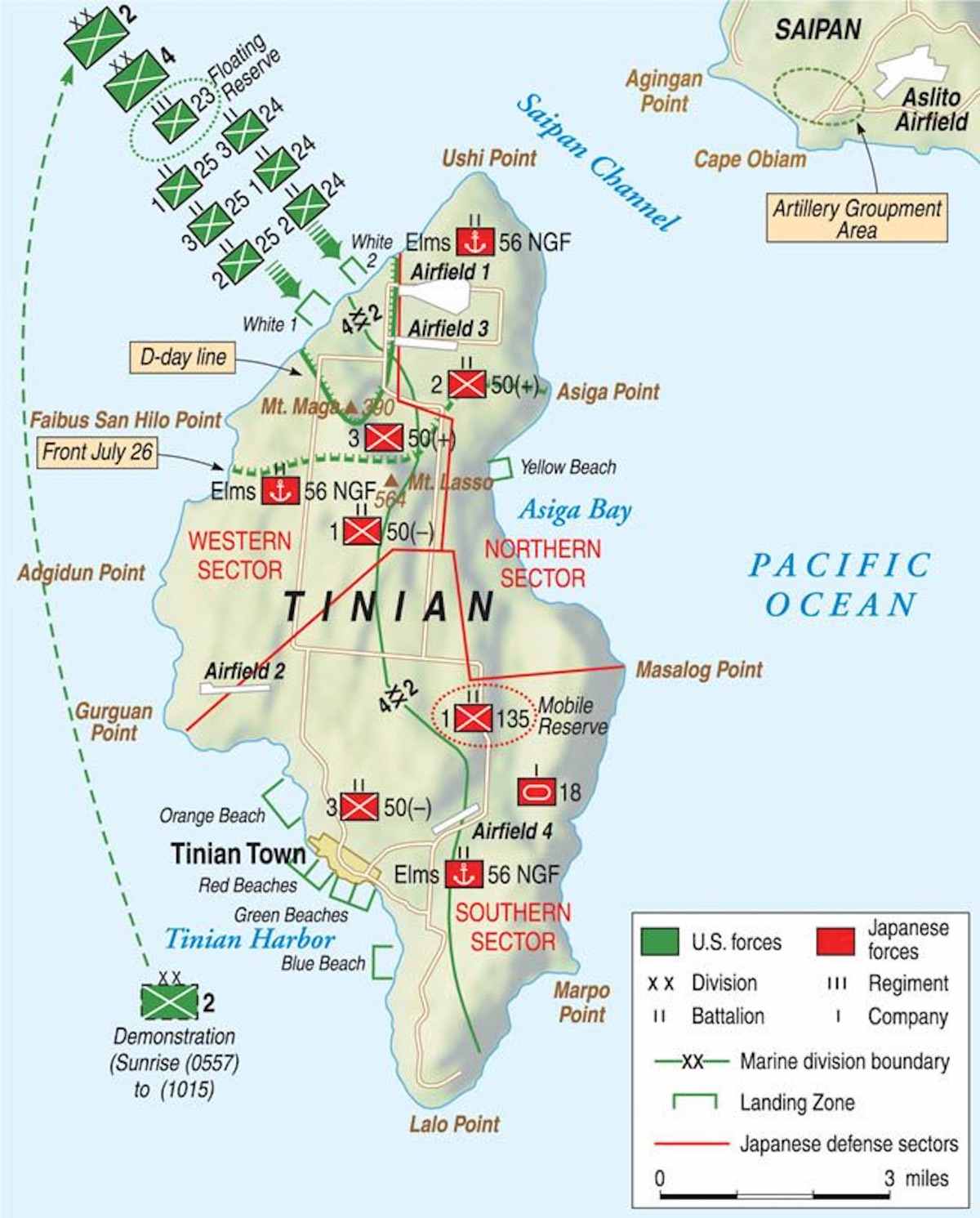
In the northwest, the White Beaches reconnaissance was assigned to Company B. Strong currents push the rubber boats off course. The team heading for White Beach 1 was swept over a thousand yards north off course and never got ashore. The team headed for White Beach 2 wound up on White Beach 1 and reconnoitered the area. The Gilmer eventually picked up both parties. The following night, ten swimmers from Company A went to White Beach 2 and were successful.
Reports from the White Beaches were encouraging. The LVTs (amphibian tractors) and other vehicles could negotiate the reefs and get ashore. Troops could also clamber over the low cliffs flanking the beaches with little difficulty. Marines disembarking from the boats on the reef could wade ashore through a shallow surf. The Navys UDT teams confirmed the Marine intelligence and reported: no man-made underwater obstructions or mines were found.
After the reconnaissance team returned from White Beach 2, Admiral Turner withdrew his objection, and the command decision was made to use the northwestern beaches. The assault was set for July 24 at 0730.
The 2nd and 4th Marine Divisions on Saipan were tasked with seizing Tinian. The Armys 27th Infantry Division would remain on Saipan in reserve. All three had been pummeled during the Saipan campaign. Together theyd suffered more than 14,000 casualties, with over 3,200 killed in action.
This would be the fourth assault in eighteen months for the 2nd Marine Division. The division left Guadalcanal in February 1943, suffering over one thousand casualties. Another 12,000 men had diagnosed malaria cases. Eight months later, on November 20, 1943the 2nd Marine Division had gone through one of the most intense seventy-two hours of combat in the history of island warfare at Tarawa. They endured 3,368 casualties, with just under a thousand dead.
Two and a half months before Tarawa, the division was still malaria-ridden, with troops hospitalized at a rate of over forty men a day. Ranks were filled with emaciated Marines, skin yellowed by the daily doses of the Atabrine pills. The Saipan operation took another heavy toll on these Marines seven months later: 1,304 killed and 5,027 wounded.
The 4th Marine Division had a busy but less demanding year. They went directly into combat after their formation at Camp Pendleton. They landed on January 31, 1944, in the Marshall Islands. They suffered 787 casualties in the capture of Roi-Namur. They endured 6,025 casualties on Saipan, with more than 1,000 Marines killed. The Tinian landing would be the third assault in six months. It would also be the first under a new divisional commanderMajor General Clifton Cates: a decorated World War I veteran who would later become the 19th Commandant of the Marine Corps in 1948.
Troop morale in the Tinian operation was generally high, wrote Marine historian Carl Hoffman. This fact takes on significance only when its recalled the Marines had just survived a bitter month-long struggle with only a two-week lapse, and they were again ordered to assault enemy-held shores. Their spirit was more of a philosophical shrug accompanied by a here we go again attitude rather than a resentment at being called upon again so soon.
The pre-invasion bombardment also helped the morale of the troops. For Jig -1 and Jig Day (Jig was the codename for D-Day on Tinian) Rear Admiral Harry Hill would command the Northern Landing Forces. He divided the island into five support sectors and assigned specific ships to each. He intended to deceive the Japanese about the true intentions of the Marine landing.
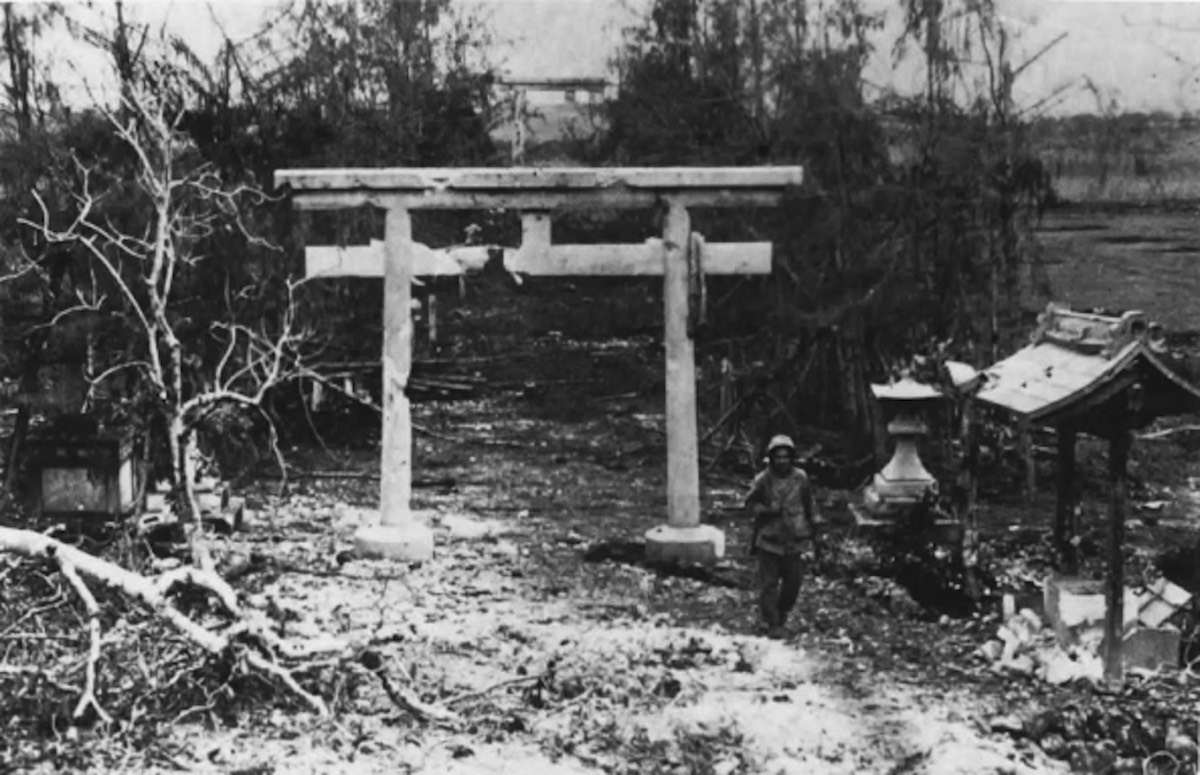
Tinian Town got the heaviest pounding the day before the landing: 2,785 rounds of 5- to 16-inch shells from battleships Tennessee, Colorado, California, and the cruiser Cleveland along with seven destroyers. Colorado had the best day with sixty rounds of 16-inch shells smashing the two six-inch coastal defense guns the Japanese had placed on the west near San Hilo Pointguns that could have covered the white beaches.
Font size:
Interval:
Bookmark:
Similar books «Invasion of Tinian: 1944 Battle for Tinian in the Mariana Islands»
Look at similar books to Invasion of Tinian: 1944 Battle for Tinian in the Mariana Islands. We have selected literature similar in name and meaning in the hope of providing readers with more options to find new, interesting, not yet read works.
Discussion, reviews of the book Invasion of Tinian: 1944 Battle for Tinian in the Mariana Islands and just readers' own opinions. Leave your comments, write what you think about the work, its meaning or the main characters. Specify what exactly you liked and what you didn't like, and why you think so.


